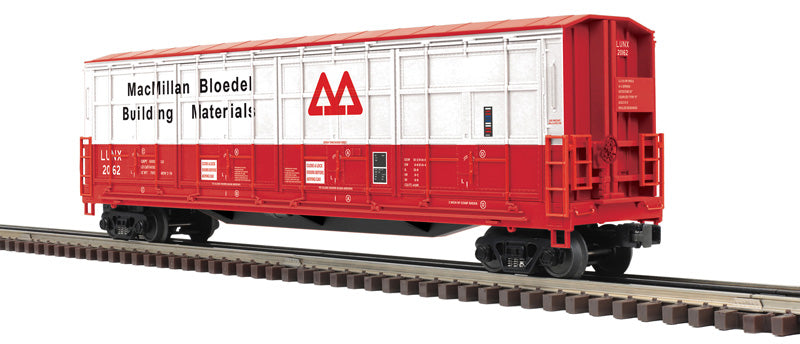Love it? Add to your wishlist
Your favorites, all in one place. Shop quickly and easily with the wishlist feature!
[message]
[title]
[message]

Announcement Date: 2024-10-17
Guaranteed Pre-Order Due Date: 2024-11-20
Expected Delivery Date: 2025-09-30
Individually Boxed:
Features:
Overview:
From the dawn of railroading, the boxcar was the vehicle of choice for transporting solid goods that needed protection from the elements. And one of the biggest bottlenecks in shipping was getting the cargo in and out of a boxcar’s doors. Over the years, doors grew wider to speed things up, and other expedients were tried - like end doors on automobile cars and small “lumber doors” on the ends of Milwaukee Road boxcars. Perhaps the ultimate solution was this all-door boxcar, where the entire side consisted of four sliding doors that could be opened in pairs to provide a 25’ wide doorway. The idea for these cars was sketched on a napkin in 1962 by Flake Willis, president of the McCloud River Railroad as they sought a lumber-carrying vehicle with the protection of a boxcar and the ease of loading of a flatcar. Delivered later the same year, the all-door car proved successful enough that the McCloud River, now owned by U.S. Plywood, ordered 100 similar cars in 1967 from Thrall Car Manufacturing Co. and Southern Iron Works. “Thrall Door” cars were purchased by lumber carriers across the U.S. and Canada through the late 1960s and early 1970s and were seen on rosters for several decades, even into the 2000s.
177 W Main St
Atlanta, IN 46031
765-292-2022
support@mrmuffinstrains.com
Sign up for our newsletter and be the first to know about coupons and special promotions.
© 2025, MrMuffin'sTrains Powered by Shopify
